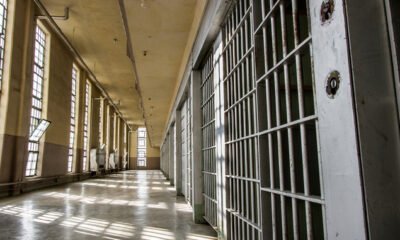arizona
Pima County Jail Costs Set to Rise: How Tucson Will Feel the Impact

Pima County’s decision to increase inmate housing costs comes as the city of Tucson grapples with rising expenses associated with maintaining its jail system. In a unanimous vote by the Tucson City Council, an adjustment to the fee structure at the Pima County Adult Detention Center was approved, bringing the booking fee from $396.30 to $495.94 per inmate, and daily housing costs increasing from $107.81 to $125.09.
This new pricing structure means that a month-long stay for a single inmate will cost Tucson approximately $4,248.64. According to Ward 2 Councilmember Paul Cunningham, who missed Tuesday’s meeting, the city’s property taxes and jail board costs are among the highest in Arizona, attributed to the county’s unique situation. Pima County serves around 300,000 residents, requiring the integration of municipal services into its budget.
A memo from City Manager Tim Thomure highlights the rising operational costs as a driver of these increases. Among several factors, recent salary hikes for county employees, including a 7.5 percent increase for jail corrections staff effective January 2023, have contributed. In addition, contracts for healthcare services within the jail are also on the rise, with Pima County’s agreement with NaphCare experiencing a 25 percent increase due to heightened substance abuse treatment demands and inflationary pressures.
In Fiscal Year 2023, Tucson allocated $4.7 million for housing inmates, with projections raising that figure to $5.6 million for Fiscal Year 2024. This summer, the Tucson Police Department accounted for more than half of the 15,605 city arrests, reflecting an urgent need for jails to accommodate rising inmate numbers. The department’s bookings into the county jail were nearly double those from the Pima County Sheriff’s Department.
The average stay for inmates from April 2022 to March 2023 was noted at 53.8 days, prompting city officials to explore alternative solutions. Despite considering options like transferring arrestees to neighboring county jails, cost and logistical challenges have limited those efforts. Councilmember Cunningham mentioned innovative proposals under consideration, such as city-managed holding areas that would link detainees to virtual courtrooms, potentially easing jail populations and judicial backlogs.
Efforts to lower the jail population have been ongoing for a decade, influenced by both fiscal constraints and the overarching goal of preventing overcrowding. In 2014, Pima County was awarded a $3.95 million grant from the MacArthur Foundation aimed specifically at reducing jail numbers. Following this, the average daily population saw a 23 percent decline, predominantly composed of offenders facing felony charges rather than non-violent misdemeanors.
However, recent years have seen a resurgence in the jail population, with Sheriff Chris Nanos labeling the numbers as “life-threatening.” As of this summer, the jail population hovered around 1,600. With two-thirds of individuals incarcerated grappling with mental health or substance abuse issues, the sheriff emphasizes a need for a systemic change beyond the jail system itself.
Councilmember Cunningham recognized initiatives such as the Crisis Response Center and the Transition Center, which offer critical support for mental illness and addiction recovery. Nevertheless, he insists that substantial, systemic change is required to effect meaningful progress in addressing jail-related challenges.

















